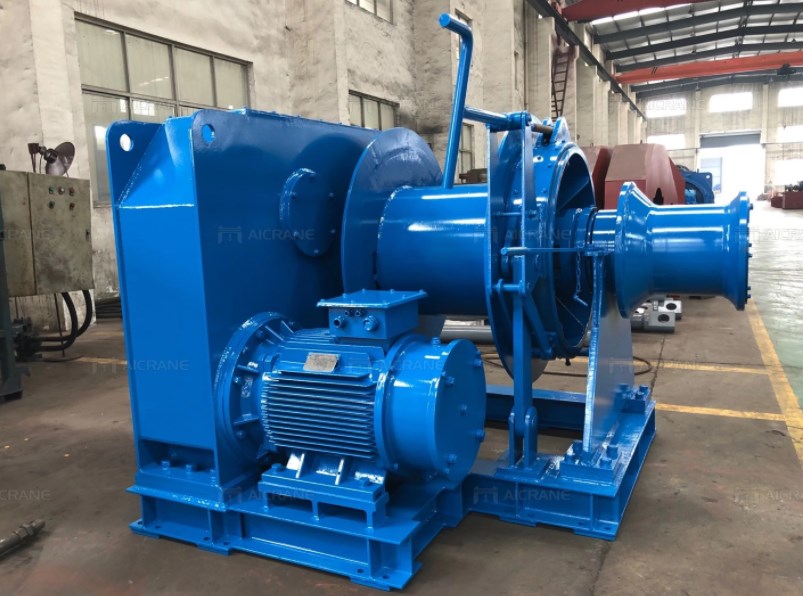Exploring the Structure and Features of Marine Electric Winches
In the ever-evolving landscape of maritime technology, the marine electric winch has emerged as a cornerstone of efficiency, versatility, and safety. As vessels become more sophisticated, the demand for reliable and powerful winching systems has grown. Electric winches have risen to the occasion, providing the maritime industry with a robust solution for various applications. In this article, we will delve into the intricate structure and compelling features that define marine electric winches.
I. Anatomy of a Marine Electric Winch
A marine electric winch for sale comprises several key components working harmoniously to accomplish the task at hand. Understanding the structure of an electric winch is crucial for optimizing its operation and maintenance:
Electric Motor: At the heart of the electric winch lies the electric motor. It converts electrical energy into mechanical power, driving the winch drum to wind or unwind cables. The type and power of the motor can vary based on the winch's intended use and load capacity.
Winch Drum: The winch drum is a cylindrical spool around which the cable or rope is wound. It provides the required traction and winding capacity for various applications. The drum's design may include flanges to prevent the cable from slipping off during operation.
Gearbox: The gearbox serves as a gear reduction mechanism, converting the high-speed, low-torque output of the electric motor into the lower-speed, higher-torque rotation needed for winching heavy loads. It enhances the winch's pulling capability while maintaining control.
Control System: The control system governs the winch's operation, enabling users to manage functions such as speed, direction, and tension. Modern electric winches often feature advanced control interfaces, including remote controls and digital displays.
Braking System: A reliable braking system is crucial for safety and control. Electric winches typically employ mechanical or electronic braking mechanisms that engage when the winch is not actively winding or unwinding.
Power Supply: Electric winches rely on a power supply, usually from the vessel's electrical system. This may include batteries, generators, or shore power connections, depending on the circumstances.
II. Features Enhancing Marine Electric Winches
Marine electric winches offer a range of features that contribute to their prominence in maritime applications:
Precision Control: Electric winches provide precise control over load handling. Operators can adjust line speed and tension with accuracy, ensuring safe and controlled movements.
Ease of Operation: The electric winch's user-friendly interface simplifies operation, making it accessible to both experienced maritime professionals and newcomers. Many models offer intuitive controls and automation features.
Adaptability: Electric winches are versatile and can be tailored to various tasks. Whether for anchoring, mooring, cargo handling, or other operations, electric winches can be configured to meet specific requirements.
Quiet Operation: Unlike some other types of winches, electric winches operate quietly, minimizing noise pollution and creating a more comfortable working environment for crew members.
Maintenance Efficiency: Electric winches generally require less maintenance compared to their hydraulic counterparts. With fewer components and fluids to manage, maintenance routines are streamlined, reducing downtime.
Space-Saving Design: The compact nature of electric winches allows for efficient space utilization on vessels. This is particularly advantageous when retrofitting or integrating winches into existing systems.
III. Considerations and Future Developments
While marine electric winches offer numerous benefits, there are considerations that maritime industries should bear in mind:
Power Supply: The availability of a stable and sufficient power supply is crucial for electric winches. Vessels must ensure that their electrical systems can meet the demands of winching operations.
Load Capacity: Electric winches come in various load capacities. Selecting an appropriate winch that aligns with the vessel's requirements is essential for optimal performance and safety.
Environmental Impact: As the maritime industry places a greater emphasis on environmental sustainability, electric winches, with their reduced emissions and noise levels, align well with these goals.
Conclusion
The marine electric winch represents a remarkable fusion of innovation and practicality in the maritime realm. Its well-engineered structure, coupled with a suite of features tailored to modern demands, has elevated the efficiency and safety of various maritime operations. As technology continues to advance, electric winches are expected to play a pivotal role in shaping the future of maritime equipment, enabling vessels to navigate challenges with greater precision and confidence.



Comments
Post a Comment